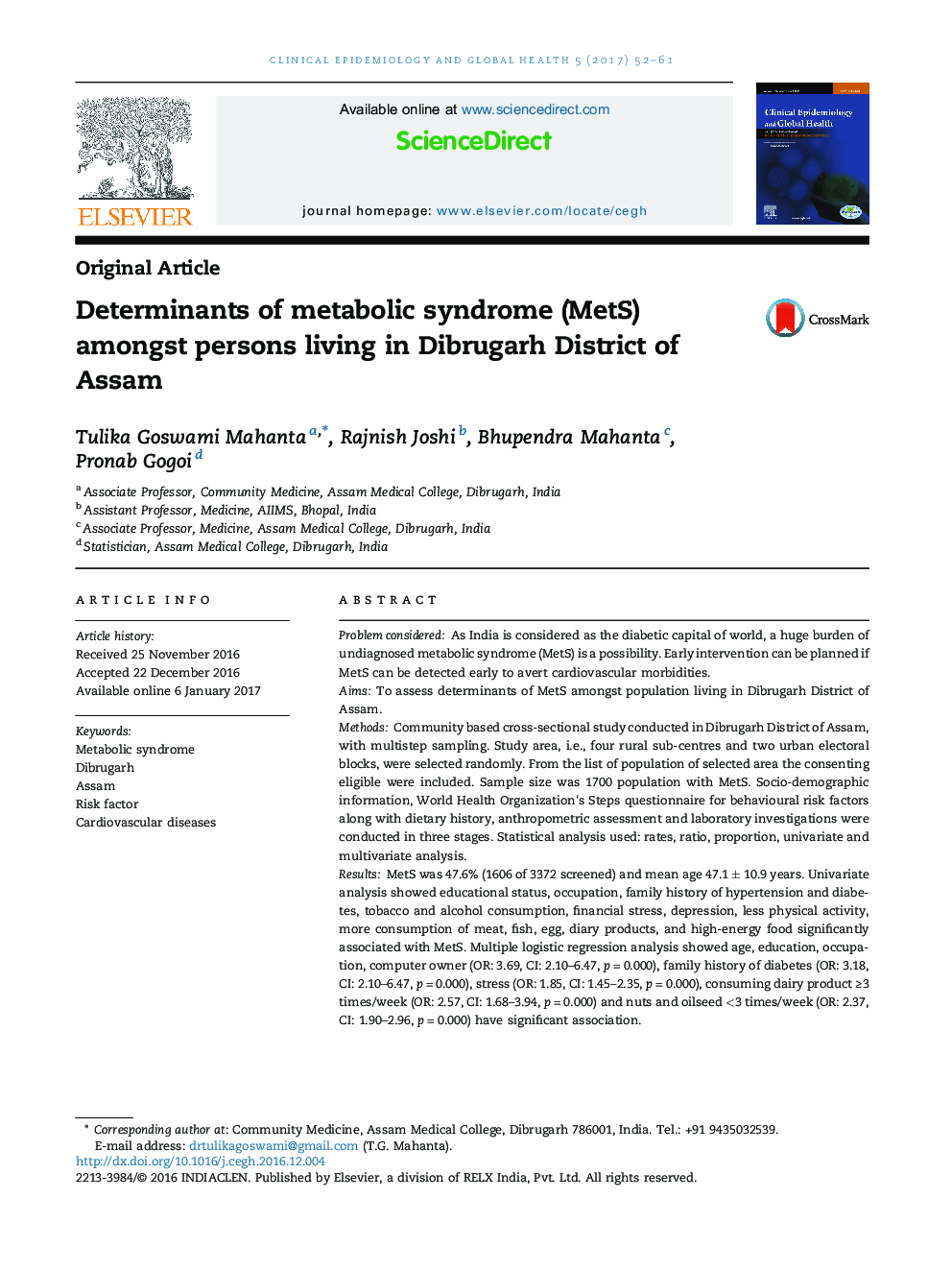| Article ID | Journal | Published Year | Pages | File Type |
|---|---|---|---|---|
| 5671415 | Clinical Epidemiology and Global Health | 2017 | 10 Pages |
Problem consideredAs India is considered as the diabetic capital of world, a huge burden of undiagnosed metabolic syndrome (MetS) is a possibility. Early intervention can be planned if MetS can be detected early to avert cardiovascular morbidities.AimsTo assess determinants of MetS amongst population living in Dibrugarh District of Assam.MethodsCommunity based cross-sectional study conducted in Dibrugarh District of Assam, with multistep sampling. Study area, i.e., four rural sub-centres and two urban electoral blocks, were selected randomly. From the list of population of selected area the consenting eligible were included. Sample size was 1700 population with MetS. Socio-demographic information, World Health Organization's Steps questionnaire for behavioural risk factors along with dietary history, anthropometric assessment and laboratory investigations were conducted in three stages. Statistical analysis used: rates, ratio, proportion, univariate and multivariate analysis.ResultsMetS was 47.6% (1606 of 3372 screened) and mean age 47.1 ± 10.9 years. Univariate analysis showed educational status, occupation, family history of hypertension and diabetes, tobacco and alcohol consumption, financial stress, depression, less physical activity, more consumption of meat, fish, egg, diary products, and high-energy food significantly associated with MetS. Multiple logistic regression analysis showed age, education, occupation, computer owner (OR: 3.69, CI: 2.10-6.47, p = 0.000), family history of diabetes (OR: 3.18, CI: 2.10-6.47, p = 0.000), stress (OR: 1.85, CI: 1.45-2.35, p = 0.000), consuming dairy product â¥3 times/week (OR: 2.57, CI: 1.68-3.94, p = 0.000) and nuts and oilseed <3 times/week (OR: 2.37, CI: 1.90-2.96, p = 0.000) have significant association.ConclusionsRisk factors of cardiovascular diseases were rampant amongst persons with MetS. Screening for risk factors amongst them can give opportunity for early intervention.
